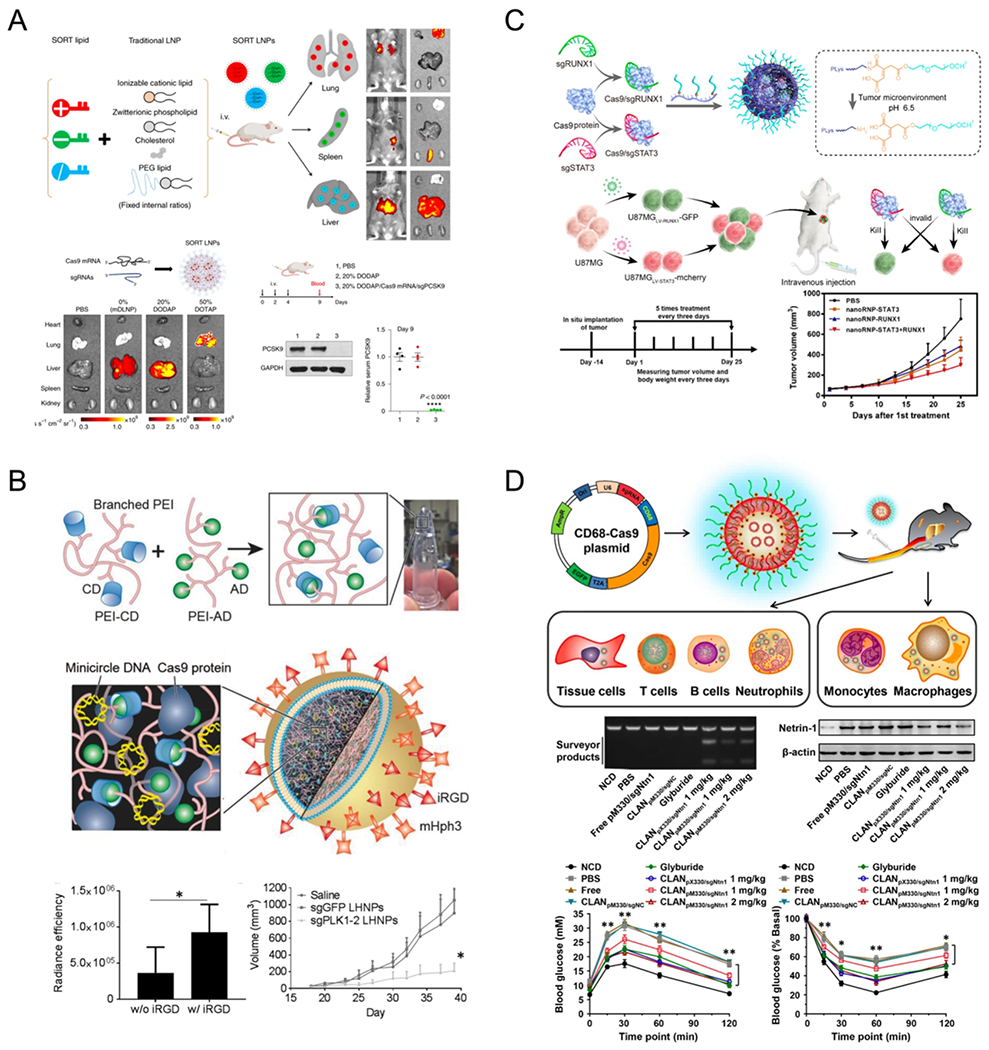Figure 8.

Nonviral delivery systems for genome editing targeting extrahepatic tissues via systemic administration. (A) Selective organ targeting (SORT) enables lipid nanoparticles (LNPs) to be systematically and predictably engineered to deliver mRNA into lung and spleen, in addition to liver. mRNA dendrimer-based lipid nanoparticles (mDLNPs) and SORT LNPs (20% DODAP) induced tdTom fluorescence specifically in the liver and SORT LNPs (50% DOTAP) selectively edited the lung. Co-delivery of Cas9 mRNA and modified sgPCSK9 was achieved with 20% DODAP SORT LNPs in C57BL/6 mice via 3 IV injections (days 0, 2, 4). After 9 days, ~60% indel at the PCSK9 locus of liver tissue was detected, leading to ~100% PCSK9 protein reduction in mice serum. Reproduced with permission from ref 100. Copyright 2020 Springer Nature. (B) Liposome-templated hydrogel nanoparticles (LHNPs) were core–shell structures, where the core and shell were formed by DOTAP liposomes and PEI hydrogel, respectively. Systemic injection of iRGD conjugated LHNPs targeting polo-like kinase 1 (Plk1) significantly suppressed tumor proliferation in mice bearing U87 flank tumors. Reproduced from ref 101. Copyright 2017 John Wiley & Sons, Inc. (C) Tumor environment responsive copolymer (PLys100-CA-mPEG77) were mixed with Cas9 ribonucleoproteins and formed stable nanostructures, named as nanoRNP. Intravenous injection of nanoRNP targeting STAT3 and RUNX1 gene loci effectively inhibited tumor growth in a heterogeneous tumor model. Reproduced from ref 102. Copyright 2019 American Chemical Society. (D) Cationic lipid-assisted PEG-b-PLGA nanoparticles (CLANs) encapsulating CD68 promoter-driven CRISPR/Cas9 plasmids could be internalized into diverse cells post intravenous injection, but only allowing Cas9 expressed in monocytes and macrophages. Intravenous injection of CLANpM330/sgNtn1 successfully knocked-out at the Ntn1 gene locus, specifically in the macrophages and monocytes, inhibited the expression of netrin-1 in macrophages and finally improved type 2 diabetes symptoms in the mouse model. Reproduced with permission from ref 103. Copyright 2018 American Chemical Society.
